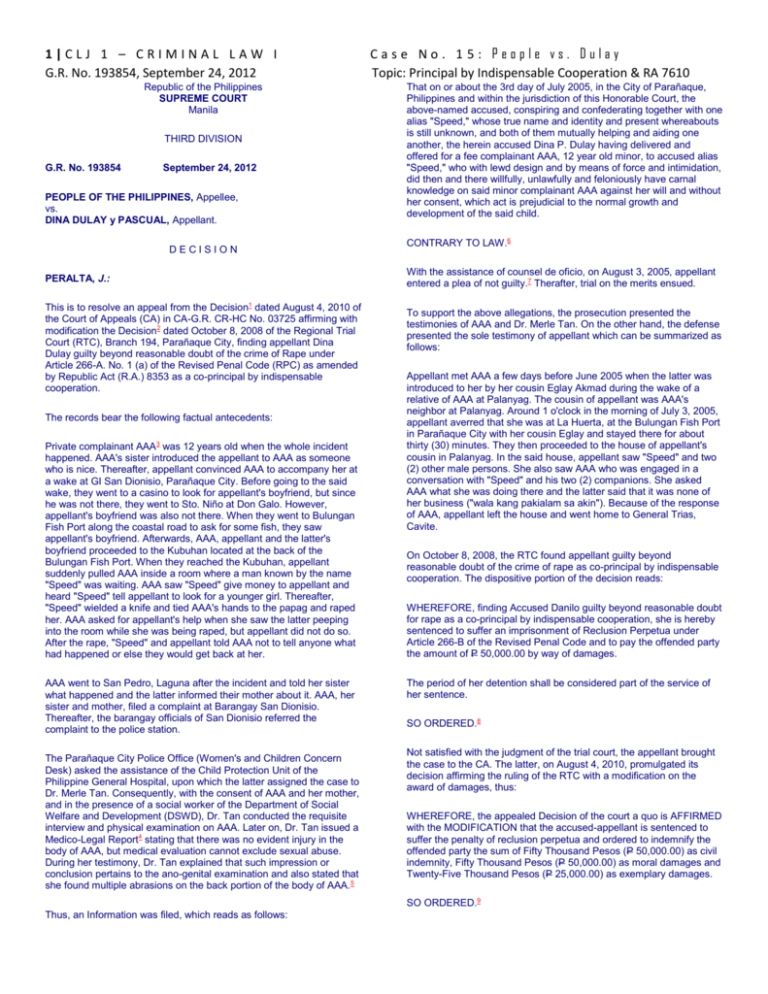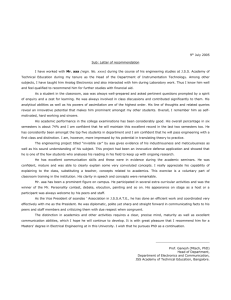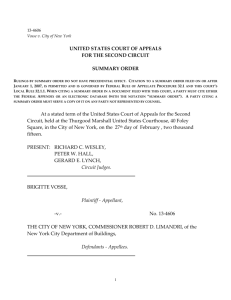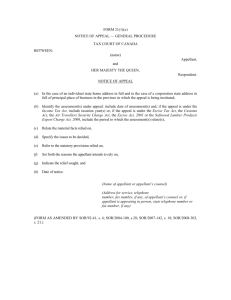
1|CLJ 1 – CRIMINAL LAW I
G.R. No. 193854, September 24, 2012
Republic of the Philippines
SUPREME COURT
Manila
THIRD DIVISION
G.R. No. 193854
September 24, 2012
PEOPLE OF THE PHILIPPINES, Appellee,
vs.
DINA DULAY y PASCUAL, Appellant.
DECISION
PERALTA, J.:
This is to resolve an appeal from the Decision1 dated August 4, 2010 of
the Court of Appeals (CA) in CA-G.R. CR-HC No. 03725 affirming with
modification the Decision2 dated October 8, 2008 of the Regional Trial
Court (RTC), Branch 194, Parañaque City, finding appellant Dina
Dulay guilty beyond reasonable doubt of the crime of Rape under
Article 266-A. No. 1 (a) of the Revised Penal Code (RPC) as amended
by Republic Act (R.A.) 8353 as a co-principal by indispensable
cooperation.
The records bear the following factual antecedents:
Private complainant AAA3 was 12 years old when the whole incident
happened. AAA's sister introduced the appellant to AAA as someone
who is nice. Thereafter, appellant convinced AAA to accompany her at
a wake at GI San Dionisio, Parañaque City. Before going to the said
wake, they went to a casino to look for appellant's boyfriend, but since
he was not there, they went to Sto. Niño at Don Galo. However,
appellant's boyfriend was also not there. When they went to Bulungan
Fish Port along the coastal road to ask for some fish, they saw
appellant's boyfriend. Afterwards, AAA, appellant and the latter's
boyfriend proceeded to the Kubuhan located at the back of the
Bulungan Fish Port. When they reached the Kubuhan, appellant
suddenly pulled AAA inside a room where a man known by the name
"Speed" was waiting. AAA saw "Speed" give money to appellant and
heard "Speed" tell appellant to look for a younger girl. Thereafter,
"Speed" wielded a knife and tied AAA's hands to the papag and raped
her. AAA asked for appellant's help when she saw the latter peeping
into the room while she was being raped, but appellant did not do so.
After the rape, "Speed" and appellant told AAA not to tell anyone what
had happened or else they would get back at her.
AAA went to San Pedro, Laguna after the incident and told her sister
what happened and the latter informed their mother about it. AAA, her
sister and mother, filed a complaint at Barangay San Dionisio.
Thereafter, the barangay officials of San Dionisio referred the
complaint to the police station.
The Parañaque City Police Office (Women's and Children Concern
Desk) asked the assistance of the Child Protection Unit of the
Philippine General Hospital, upon which the latter assigned the case to
Dr. Merle Tan. Consequently, with the consent of AAA and her mother,
and in the presence of a social worker of the Department of Social
Welfare and Development (DSWD), Dr. Tan conducted the requisite
interview and physical examination on AAA. Later on, Dr. Tan issued a
Medico-Legal Report4 stating that there was no evident injury in the
body of AAA, but medical evaluation cannot exclude sexual abuse.
During her testimony, Dr. Tan explained that such impression or
conclusion pertains to the ano-genital examination and also stated that
she found multiple abrasions on the back portion of the body of AAA.5
Case No. 15: People vs. Dulay
Topic: Principal by Indispensable Cooperation & RA 7610
That on or about the 3rd day of July 2005, in the City of Parañaque,
Philippines and within the jurisdiction of this Honorable Court, the
above-named accused, conspiring and confederating together with one
alias "Speed," whose true name and identity and present whereabouts
is still unknown, and both of them mutually helping and aiding one
another, the herein accused Dina P. Dulay having delivered and
offered for a fee complainant AAA, 12 year old minor, to accused alias
"Speed," who with lewd design and by means of force and intimidation,
did then and there willfully, unlawfully and feloniously have carnal
knowledge on said minor complainant AAA against her will and without
her consent, which act is prejudicial to the normal growth and
development of the said child.
CONTRARY TO LAW.6
With the assistance of counsel de oficio, on August 3, 2005, appellant
entered a plea of not guilty.7 Therafter, trial on the merits ensued.
To support the above allegations, the prosecution presented the
testimonies of AAA and Dr. Merle Tan. On the other hand, the defense
presented the sole testimony of appellant which can be summarized as
follows:
Appellant met AAA a few days before June 2005 when the latter was
introduced to her by her cousin Eglay Akmad during the wake of a
relative of AAA at Palanyag. The cousin of appellant was AAA's
neighbor at Palanyag. Around 1 o'clock in the morning of July 3, 2005,
appellant averred that she was at La Huerta, at the Bulungan Fish Port
in Parañaque City with her cousin Eglay and stayed there for about
thirty (30) minutes. They then proceeded to the house of appellant's
cousin in Palanyag. In the said house, appellant saw "Speed" and two
(2) other male persons. She also saw AAA who was engaged in a
conversation with "Speed" and his two (2) companions. She asked
AAA what she was doing there and the latter said that it was none of
her business ("wala kang pakialam sa akin"). Because of the response
of AAA, appellant left the house and went home to General Trias,
Cavite.
On October 8, 2008, the RTC found appellant guilty beyond
reasonable doubt of the crime of rape as co-principal by indispensable
cooperation. The dispositive portion of the decision reads:
WHEREFORE, finding Accused Danilo guilty beyond reasonable doubt
for rape as a co-principal by indispensable cooperation, she is hereby
sentenced to suffer an imprisonment of Reclusion Perpetua under
Article 266-B of the Revised Penal Code and to pay the offended party
the amount of P 50,000.00 by way of damages.
The period of her detention shall be considered part of the service of
her sentence.
SO ORDERED.8
Not satisfied with the judgment of the trial court, the appellant brought
the case to the CA. The latter, on August 4, 2010, promulgated its
decision affirming the ruling of the RTC with a modification on the
award of damages, thus:
WHEREFORE, the appealed Decision of the court a quo is AFFIRMED
with the MODIFICATION that the accused-appellant is sentenced to
suffer the penalty of reclusion perpetua and ordered to indemnify the
offended party the sum of Fifty Thousand Pesos (P 50,000.00) as civil
indemnity, Fifty Thousand Pesos (P 50,000.00) as moral damages and
Twenty-Five Thousand Pesos (P 25,000.00) as exemplary damages.
SO ORDERED.9
Thus, an Information was filed, which reads as follows:
2|CLJ 1 – CRIMINAL LAW I
G.R. No. 193854, September 24, 2012
Hence, the present appeal.
In her Brief, appellant assigned the following errors:
I
THE COURT A QUO GRAVELY ERRED IN FINDING THE
ACCUSED-APPELLANT GUILTY OF RAPE AS CO-PRINCIPAL BY
INDISPENSABLE COOPERATION.
II
THE TRIAL COURT GRAVELY ERRED IN GIVING FULL WEIGHT
AND CREDENCE TO THE TESTIMONY OF THE PRIVATE
COMPLAINANT AAA.10
The Office of the Solicitor General, representing the appellee, refutes
the above assignment of errors by stating the following arguments:
I.
CONSPIRACY WAS CLEARLY ESTABLISHED IN THIS CASE.
II.
THE LOWER COURT DID NOT ERR IN BELIEVING THE
TESTIMONY OF PRIVATE COMPLAINANT.
III.
ACCUSED-APPELLANT'S DEFENSE OF DENIAL CANNOT BE
GIVEN GREATER EVIDENTIARY WEIGHT THAN THE POSITIVE
TESTIMONY OF PRIVATE COMPLAINANT.11
An appeal in a criminal case throws the whole case wide open for
review and the reviewing tribunal can correct errors, though
unassigned in the appealed judgment, or even reverse the trial court's
decision on the basis of grounds other than those that the parties
raised as errors.12
The appellant in this case was charged in the Information as having
committed the crime of Rape under Article 266-A, No. 1 (a) of the
RPC, as amended by R.A. 8353 in relation to Section 5 (b) of R.A.
7610. She was eventually convicted by the trial court of the crime of
rape as a co-principal by indispensable cooperation and was
sentenced to suffer imprisonment of reclusion perpetua as provided
under Article 266-B of the RPC.
Case No. 15: People vs. Dulay
Topic: Principal by Indispensable Cooperation & RA 7610
Accused-appellant cooperated in the perpetration of the crime of rape
committed by "Speed" by acts without which the crime would not have
been consummated, since she prepared the way for the perpetration
thereof, convinced the victim to go with her under the guise of looking
for her boyfriend and upon arrival at the kubuhan, she pulled the victim
inside a room where "Speed" was waiting, delivered the victim to him,
and then after receiving some amount of money from "Speed" she
settled in another room together with her boyfriend so that "Speed"
might freely consummate the rape with violence and intimidation, as he
did.13
However, this Court is of another view and does not subscribe to the
findings of the trial court, as sustained by the CA that appellant is guilty
beyond reasonable doubt as co-principal by indispensable cooperation
in the crime of rape.
Under the Revised Penal Code,14 an accused may be considered a
principal by direct participation, by inducement, or by indispensable
cooperation. To be a principal by indispensable cooperation, one must
participate in the criminal resolution, a conspiracy or unity in criminal
purpose and cooperation in the commission of the offense by
performing another act without which it would not have been
accomplished.15 Nothing in the evidence presented by the prosecution
does it show that the acts committed by appellant are indispensable in
the commission of the crime of rape. The events narrated by the CA,
from the time appellant convinced AAA to go with her until appellant
received money from the man who allegedly raped AAA, are not
indispensable in the crime of rape. Anyone could have accompanied
AAA and offered the latter's services in exchange for money and AAA
could still have been raped. Even AAA could have offered her own
services in exchange for monetary consideration and still end up being
raped. Thus, this disproves the indispensable aspect of the appellant in
the crime of rape. It must be remembered that in the Information, as
well as in the testimony of AAA, she was delivered and offered for a
fee by appellant, thereafter, she was raped by "Speed." Thus:
PROS. R. GARCIA: Now, what happened after you met this Dina
Dulay?
WITNESS AAA: She invited me to go with her boyfriend, Sir.
xxxx
Q: You went to the bulungan, what happened when you reached the
fish port or bulungan, AAA?
A: Pumunta kami sa kubuhan, Sir.
Q: Where is this kubuhan located in relation to the fish port?
A: At the back portion, Sir.
In sustaining the conviction of the appellant as co-principal by
indispensable cooperation, the CA, ratiocinated:
To cooperate means to desire or wish in common a thing. But that
common will or purpose does not necessarily mean previous
understanding, for it can be explained or inferred from the
circumstances of each case. The cooperation must be indispensable,
that is, without which the commission of the crime would not have been
accomplished. x x x
Q: And, when you said pumunta kami, who was then your companion
in going to that kubuhan?
A: Dina Dulay and her boyfriend, Sir.
Q: Do you know the name of the boyfriend of Dina Dulay?
A: No, Sir.
xxxx
xxxx
The proven facts and circumstances obtaining in this case fall squarely
on the above-cited example. It will be noted that the cooperation of the
accused-appellant consisted in performing an act which is different
from the act of execution of the crime committed by the rapist.
Q: All right. After reaching the kubuhan, what happened next?
3|CLJ 1 – CRIMINAL LAW I
G.R. No. 193854, September 24, 2012
Case No. 15: People vs. Dulay
Topic: Principal by Indispensable Cooperation & RA 7610
A: Pina-rape po ako, Sir.
A: It was painful, Sir.
Q: What made you say AAA that accused here Dina Dulay had you
raped at the kubuhan?
Q: And, how did you react when as you said you were being raped by
this person?
A: Kasi po binayaran siya nung lalaki, Sir.
A: I cannot talk. He put clothes in my mouth, Sir.
Q: Now, do you know how much this Dina Dulay was paid by that
person who was you said raped you?
Q: For how long did you stay in that kubuhan with this man? May isang
oras ba kayo doon?
A: No, Sir. I just saw them.
A: Yes, Sir.
Q: And what did you see that was paid to Dina?
Q: Now, tell us how AAA many times did this person insert his penis
into your organ?
A: Pera, Sir.
A: Only one (1) AAA, Sir.17
Q: Aside from seeing a guy giving money to Dina Dulay, did you hear
any conversation between this Dina Dulay and that man who gave
money to her?
A: Yes, sir.
Q: Can you tell this Honorable Court AAA, what was that conversation
you heard between this Dina Dulay and the person who gave money to
her?
A: He said to look for a younger girl, Sir.16
xxxx
PROS. R. GARCIA:
Q: Okay. After that conversation and the giving of money to Dina
Dulay, what happened to you and the man?
A: He raped me, Sir.
Q: Where were you raped?
A: At the Kubuhan, Sir. Q: Can you describe to this Honorable Court
how you were raped by that person?
A: He tied me up, Sir.
Q: How were you tied up as you said?
It must be clear that this Court respects the findings of the trial court
that AAA was indeed raped by considering the credibility of the
testimony of AAA. The rule is that factual findings of the trial court and
its evaluation of the credibility of witnesses and their testimonies are
entitled to great respect and will not be disturbed on appeal.18However,
the review of a criminal case opens up the case in its entirety. The
totality of the evidence presented by both the prosecution and the
defense are weighed, thus, avoiding general conclusions based on
isolated pieces of evidence.19 In the case of rape, a review begins with
the reality that rape is a very serious accusation that is painful to make;
at the same time, it is a charge that is not hard to lay against another
by one with malice in her mind. Because of the private nature of the
crime that justifies the acceptance of the lone testimony of a credible
victim to convict, it is not easy for the accused, although innocent, to
disprove his guilt. These realities compel this Court to approach with
great caution and to scrutinize the statements of a victim on whose
sole testimony conviction or acquittal depends.20
In this light, while this Court does not find appellant to have committed
the crime of rape as a principal by indispensable cooperation, she is
still guilty of violation of Section 5 (a) of R.A. 7610, or the Special
Protection of Children Against Abuse, Exploitation and Discrimination
Act, which states that:
Section 5. Child Prostitution and Other Sexual Abuse. – Children,
whether male or female, who for money, profit, or any other
consideration or due to the coercion or influence of any adult,
syndicate or group, indulge in sexual intercourse or lascivious conduct,
are deemed to be children exploited in prostitution and other sexual
abuse.
The penalty of reclusion temporal in its medium period to reclusion
perpetua shall be imposed upon the following:
A: He tied up both my hands, Sir.
Q: Then after tying your hands what happened next?
A: He raped me and he pointed a knife at me, Sir.
Q: When you said you were raped, are you referring to the insertion of
his penis into your sex organ?
(a) Those who engage in or promote, facilitate or induce child
prostitution which include, but are not limited to, the following:
(1) Acting as a procurer of a child prostitute;
(2) Inducing a person to be a client of a child prostitute by means of
written or oral advertisements or other similar means;
A: Yes, Sir.
(3) Taking advantage of influence or relationship to procure a child as
a prostitute;
Q: And, how did you feel at that time when the organ of this man was
inserted into your organ?
(4) Threatening or using violence towards a child to engage him as a
prostitute; or
4|CLJ 1 – CRIMINAL LAW I
G.R. No. 193854, September 24, 2012
(5) Giving monetary consideration goods or other pecuniary benefit to
a child with intent to engage such child in prostitution. 21
The elements of paragraph (a) are:
1. the accused engages in, promotes, facilitates or induces child
prostitution;
2. the act is done through, but not limited to, the following means:
Case No. 15: People vs. Dulay
Topic: Principal by Indispensable Cooperation & RA 7610
Undoubtedly, the above-quoted falls under Section 5 (a) of R.A. 7610,
the appellant acting as a procurer of a child and inducing the latter into
prostitution. It must be remembered that the character of the crime is
not determined by the caption or preamble of the information nor from
the specification of the provision of law alleged to have been violated,
they may be conclusions of law, but by the recital of the ultimate facts
and circumstances in the complaint or information.28 The sufficiency of
an information is not negated by an incomplete or defective
designation of the crime in the caption or other parts of the information
but by the narration of facts and circumstances which adequately
depicts a crime and sufficiently apprises the accused of the nature and
cause of the accusation against him.291âwphi1
a. acting as a procurer of a child prostitute;
b. inducing a person to be a client of a child prostitute by means of
written or oral advertisements or other similar means;
c. taking advantage of influence or relationship to procure a child as a
prostitute;
d. threatening or using violence towards a child to engage him as a
prostitute; or
e. giving monetary consideration, goods or other pecuniary benefit to a
child with intent to engage such child in prostitution;
3. the child is exploited or intended to be exploited in prostitution and
4. the child, whether male or female, is below 18 years of age. 22
Paragraph (a) essentially punishes acts pertaining to or connected with
child prostitution. It contemplates sexual abuse of a child exploited in
prostitution. In other words, under paragraph (a), the child is abused
primarily for profit.23
As alleged in the Information and proven through the testimony of
AAA, appellant facilitated or induced child prostitution. Children,
whether male or female, who for money, profit, or any other
consideration or due to the coercion or influence of any adult,
syndicate or group, indulge in sexual intercourse or lascivious conduct,
are deemed to be children exploited in prostitution and other sexual
abuse.24 Thus, the act of apellant in convincing AAA, who was 12
years old at that time, to go with her and thereafter, offer her for sex to
a man in exchange for money makes her liable under the abovementioned law. The purpose of the law is to provide special protection
to children from all forms of abuse, neglect, cruelty, exploitation and
discrimination, and other conditions prejudicial to their
development.25 A child exploited in prostitution may seem to "consent"
to what is being done to her or him and may appear not to complain.
However, we have held that a child who is "a person below eighteen
years of age or those unable to fully take care of themselves or protect
themselves from abuse, neglect, cruelty, exploitation or discrimination
because of their age or mental disability or condition" is incapable of
giving rational consent26 to any lascivious act or sexual intercourse.
It must be noted that in the Information, it was alleged that appellant
was accused of Rape under Article 266-A, No. 1 (a) of the RPC, as
amended by R.A. 8353 in relation to Section 5 (b) of R.A. 7610, and
then went on to enumerate the elements of Section 5 (a) of R.A. 7610
in its body. The Information partly reads:
x x x the herein accused Dina P. Dulay having delivered and offered
for a fee complainant AAA, 12 year old minor, to accused alias
"Speed," who with lewd design and by means of force and intimidation,
did then and there willfully, unlawfully and feloniously have carnal
knowledge on said minor complainant AAA against her will and without
her consent x x x 27
To dispute the allegation and the evidence presented by the
prosecution, appellant merely interposes the defense of denial. It is
well settled that denial is essentially the weakest form of defense and it
can never overcome an affirmative testimony, particularly when it
comes from the mouth of a credible witness.30
Anent the penalty, for violation of the provisions of Section 5, Article III
of R.A. 7610, the penalty prescribed is reclusion temporal in its
medium period to reclusion perpetua. Therefore, in the absence of any
mitigating or aggravating circumstance, the proper imposable penalty
is reclusion temporal in its maximum period, the medium of the penalty
prescribed by the law.31 Notwithstanding that R.A. 7610 is a special
law, appellant may enjoy the benefits of the Indeterminate Sentence
Law.32 Since the penalty provided in R.A. 7610 is taken from the range
of penalties in the Revised Penal Code, it is covered by the first clause
of Section 1 of the Indeterminate Sentence Law.33 Thus, appellant is
entitled to a maximum term which should be within the range of the
proper imposable penalty of reclusion temporal in its maximum period
(ranging from 17 years, 4 months and 1 day to 20 years) and a
minimum term to be taken within the range of the penalty next lower to
that prescribed by the law: prision mayor in its medium period to
reclusion temporal in its minimum period (ranging from 8 years and 1
day to 14 years and 8 months).34
As to the award of damages, the same must be consistent with the
objective of R.A. 7610 to afford children special protection against
abuse, exploitation and discrimination and with the principle that every
person who contrary to law, willfully or negligently causes damage to
another shall indemnify the latter for the same.35 Therefore, civil
indemnity to the child is proper in a case involving violation of Section
5 (a), Article III of R.A. 7610. This is also in compliance with Article 100
of the RPC which states that every person criminally liable is civilly
liable. Hence, the amount of P 50,000.00 civil indemnity ex delicto as
awarded in cases of violation of Section 5 (b), Article III of R.A.
761036 shall also be the same in cases of violation of Section 5 (a),
Article III of R.A. 7610.
WHEREFORE, the appeal of appellant Dina Dulay y Pascual is hereby
DISMISSED. However, the Decision of the CA is hereby MODIFIED as
appellant is not guilty beyond reasonable doubt of the crime of rape,
but of violating Section 5 (a), Article III R.A. 7610, amended, for which
she is sentenced to fourteen (14) years and eight (8) months of
reclusion temporal, as minimum, to twenty (20) years of reclusion
temporal, as maximum. Appellant is also ORDERED to pay AAA the
amount of P 50,000.00 as civil indemnity.
SO ORDERED.
DIOSDADO M. PERALTA
Associate Justice


![[J-56A&B-2014][MO – Eakin, J.] IN THE SUPREME COURT OF](http://s3.studylib.net/store/data/008438149_1-ddd67f54580e54c004e3a347786df2e1-300x300.png)




